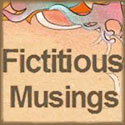Interview of Traci Slatton & Sabin Howard on Bookpleasures.com
Great interview, great questions!!
What fun!

Norm Goldman, B.A. LL.L, is the Publisher & Editor of Bookpleasures, which he created in 2002.’ Practicing law for over 35 years enabled Norm to transfer and apply to book reviewing his many skills that he had perfected during his career in the legal profession and as a result he became a prolific free lance book reviewer & author interviewer.
Norm:
What motivated you to write The Art of Life and what was your creative process like? What happened before you sat down to write the book? What do you hope to accomplish with the book?
Traci:
Sabin is always talking about art, and what contemporary art lacks: rigor, grounding in the great historical tradition, and beauty. A lot of art right now is just silly–especially sculpture, which tends to be tschotchkis, ridiculous balloon animals, or oversized toys. Sabin brims with passion to change the art world and to bring back the rigor of craft and the good feelings and uplift that great art inspires. The process of writing the book revolved around us sitting down at the dining room table and me listening to Sabin. (And boy, can he go on about art!) Then I would do research, reading books that we discussed and making trips to museums with Sabin. Finally, I would write. Sabin would add and revise. I would rewrite.
It’s not so easy to write a book with one’s husband; names might have been called, objects might have been thrown!
What we hope to accomplish is to spread the word in the art world: “The emperor has no clothes.” Then we want to suggest the alternative to people: beautiful art made with passion, integrity, and superb technique.
Sabin:
Currently the norm in the art world is the decimation of the difference between “art world” and “real world,” there is no difference. I was brought up to believe that art is sacred; once you look past the picture frame, you look into an elevated world. Or if you look at a sculpture on a pedestal, it’s lifted up off the ground. So art is not “real” but more about what can be. I wanted to write this book because education is so important in how you look at art. Art works on many levels, but principally, art’s main function is VISUAL. So the book is a way to educate people about the importance of our rich historical past and how that’s not something to be thrown out.
This rich historical past talks about us as human beings. Figurative art should always be present in the art world because it represents us on a cultural level, as well. Since the art represents us as humans, it should represent our best parts, not our isolation and devolution, as modern art does. Modern art is a desensitization of our humanity and a discontinuation of our rich past.
I realized when I spoke to all my clients that the more they learned about the depth of the art, the more they become intrigued and passionate about sculpture. After twenty years of teaching, I realized my ideas could reach a broader audience with a book.
Norm:
Sabin, you have had quite an eventful career, what influenced your evolution as a sculptor?
Sabin:
I didn’t start off my life knowing that I would be an artist. It came to me on October 19th, 1982 in a grungy wood shop in South Philly, where I was working after having dropped out of college. I decided that afternoon that my life was going nowhere and I had to do something radically different. I decided at that moment: I would become an artist.
This did not come out of a vacuum but was the direct result of having grown up in Italy and having experienced Michelangelo and all the great cathedrals of Europe as a child. I knew that great art was something sacred. I knew that it took great skill and learning to create an art that changed people inside. When you are 19, the sky is the limit. Anything is possible. With an urgency to set out on that path, I enrolled in the following fall in the nearby art school, Philadelphia College of Art, and this is where I met my teachers and mentors Martha and Walter Erlebacher. I had zero interest in the current art world and showed no respect for other teachers who told me that the Renaissance was something from the past. I knew that the feeling one got when viewing this type of art was timeless. I obsessively looked at Michelangelo, Leonardo, and Raphael. Everywhere I went I carried a book under my arm. It was a template for me to follow. I knew instinctively that I had to learn specific information from the Erlebachers so that I would have the tools to make “real art.” Art was part of another world that you looked into. It was divided from this world by a picture frame, or elevated about the ground on a pedestal. Great skill was involved and not everyone was capable of doing it.
I spent 15 years learning my craft. I learned the nuts and bolts of creating an art form that would be seen as “awesome” and carry with it a startling presence. I became fascinated with the variety of body types and poses available to me as a sculptor. I learned that each human being carries a unique soul and life experience within their body and this energy manifests itself externally in the morphology and demeanor of the each individual. This uniqueness can be found in each individual part and how all those parts fit together to make the whole. Once I had gained mastery in the ability to design and compose exactly what I saw in life, I took the next step in choosing what story I wanted the body to tell. The variety of energies that I could choose to depict in each sculpture became the next step in my artistic process.
There is an internal pressure within the body that always pushes outward in a convex fashion. This internal pressure shows the unique spirit or soul of each individual; no two people are exactly alike. Using anatomy to translate this life force energy into sculptural terms, I learned to recreate this pressure within my bronzes, giving them the fullness of energy and presence of a unique human being.
Because my work is about showing man at his full potential, I began recruiting several models to create each piece. This part of my process allowed me to pick and choose the body parts to sculpt a unique morphology that best narrates the story and character that I am presenting. In this process of creation, I use my understanding of anatomy and I structure of the human body to organize the figure. The spiraling of muscles over the architectural foundation of the skeleton has become my grammar in telling a story that speaks to the human condition. As I evolved as a human being, my art evolved in a parallel fashion. The work I did in the 90’s with the seated figures and fragmented torsos exemplified my own struggles and stress, and this is why I gravitated towards that subject matter. Thus my art is, on one level, a visual record of my internal growth. The sculptures are an energetic evolution of my own experience and history. In the last 15 years, the energy of my sculptures has metamorphasized from figures that are closed and pressed down by gravity, to figures that carry an expansive energy with an open heart. The poses have become more elegant and graceful, taking on god-like proportions. The transitions between limbs flow with greater harmony. And the hierarchy of parts fit together with an ease suggesting a greater sense of wholeness. My vision as an artist has evolved from one of oppression and struggle to a realization that the universe is full of grace available to all those willing to open their eyes in the creation of the life of their own choosing.
Norm:
Traci, who has written about your books and Sabin’s sculptures and how do you view their perspectives, opinions, and comments?
Traci:
My books are all over the internet, specifically with book review bloggers (who are very influential!), and fortunately have received some wonderful reviews. Of course, there are always less stellar reviews. My attitude toward those can be expressed in one word: “Next.” But I also try to learn from critical reviews, so that the next book is better. There’s always room for growth!
Sabin’s sculptures have been written about by several art critics, notably James Cooper and Peter Trippi. Jim is a great admirer of Sabin’s work and sees the potential for art to uplift and transform people. He has been a wonderful supporter of Sabin’s rather lonely efforts.
But it’s not just art critics who admire Sabin’s work. Once Sabin was moving the Aphrodite out of his studio into a moving van, and she was on the street for a while. People from all walks of life walked up or drove up in cars to gawk. They were teachers, firemen, trash collectors, shop keepers, lawyers, mothers pushing carriages–Sabin had a wonderful hour of fielding questions from people whose only commonality was that they were struck by his sculpture’s beauty. He came home and told me about this, and all I could think was, “This is what great art should do: magnetically draw people in, all people, from the PhD to the high school drop-out!” We intuitively feel and recognize mastery.
Sabin:
The critics who have written about me are very positive about what I am doing. It reinforces the importance of doing something vital in the art world.











